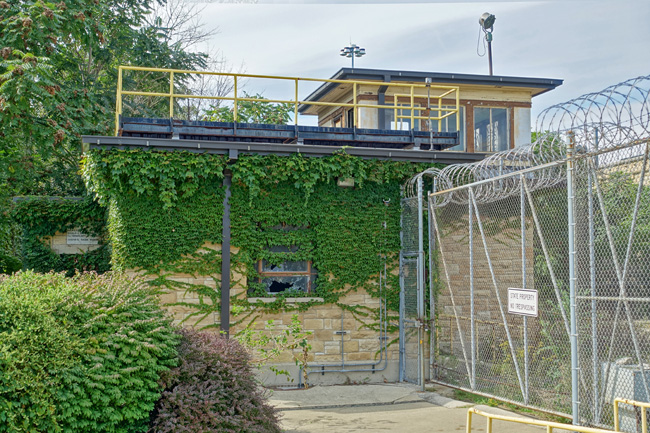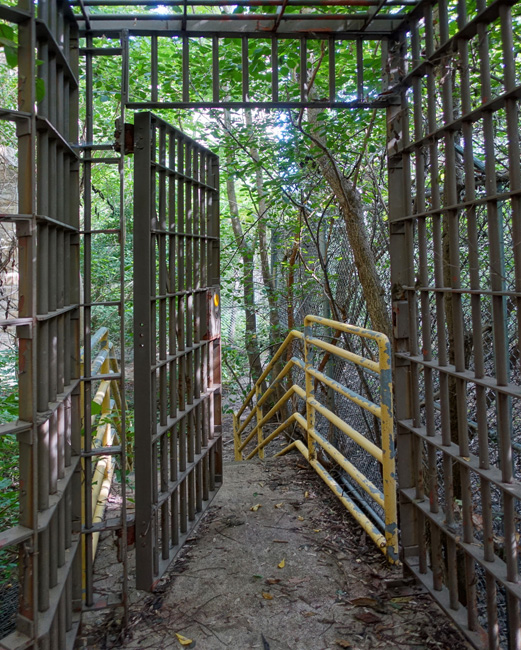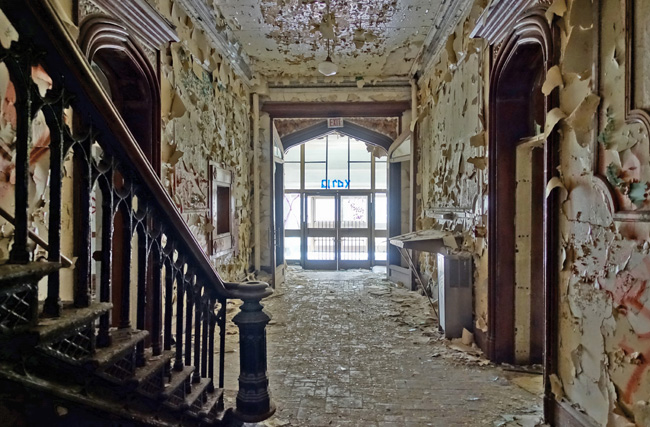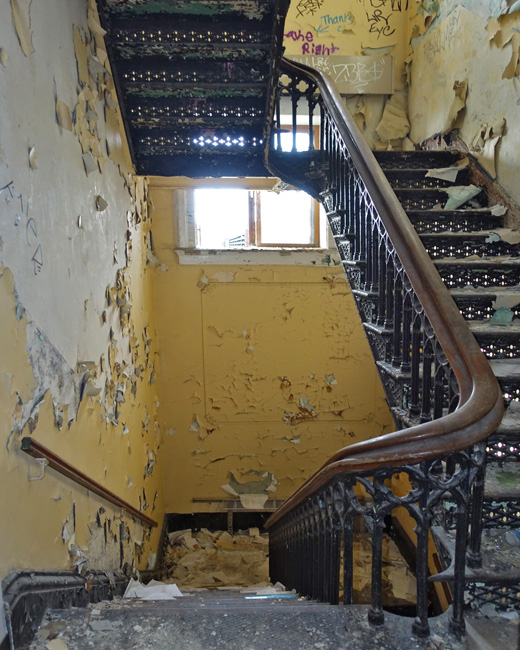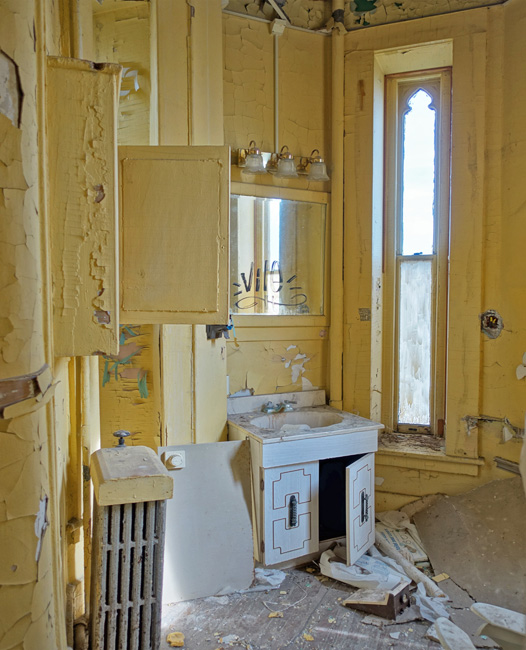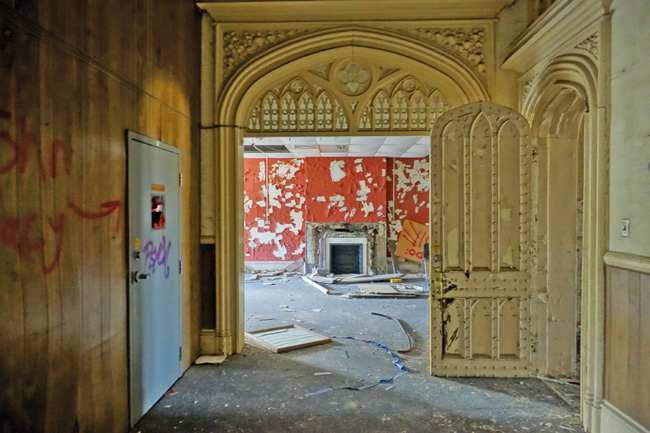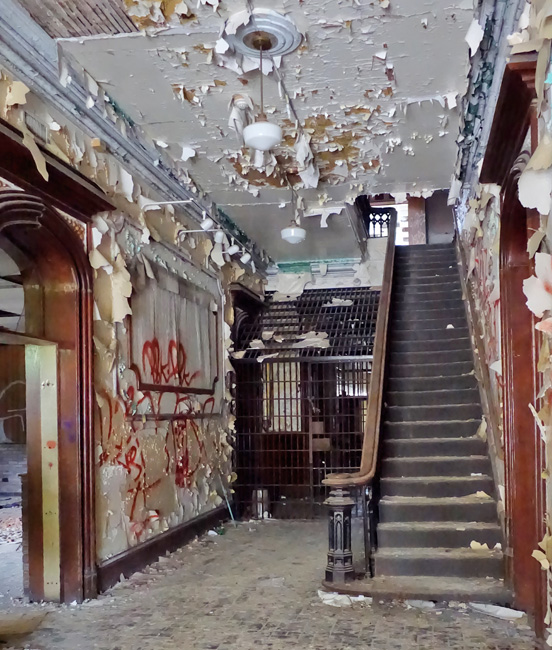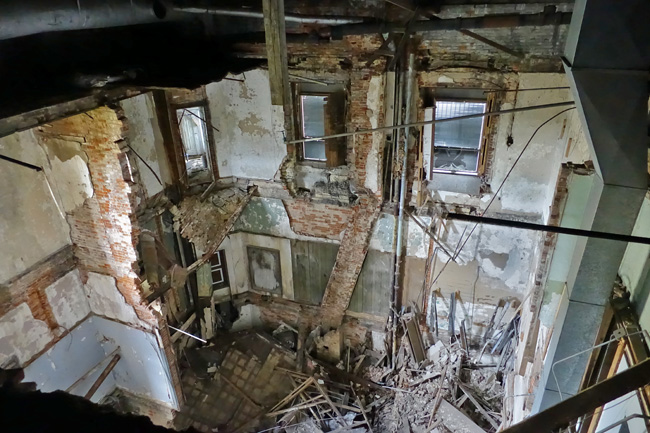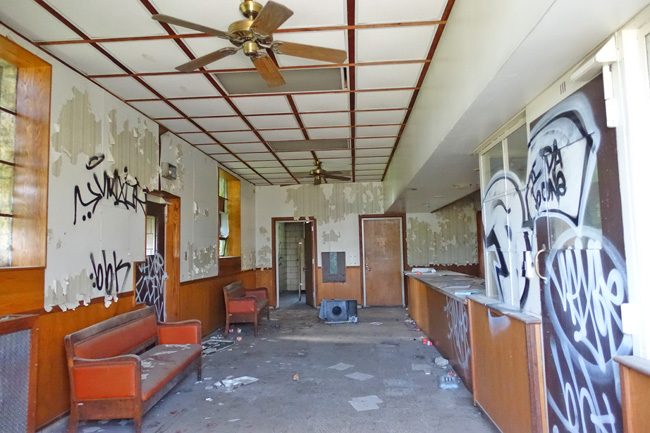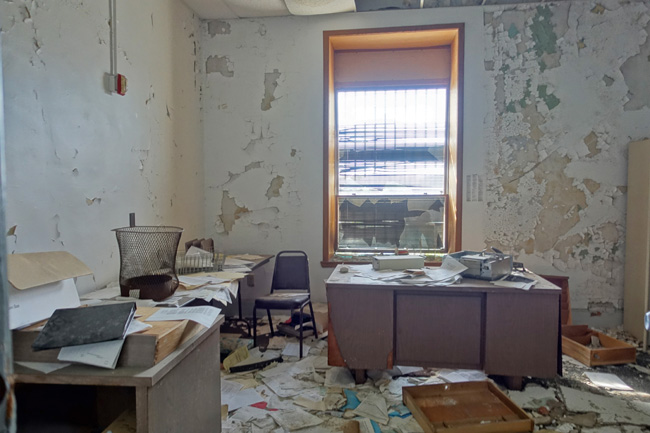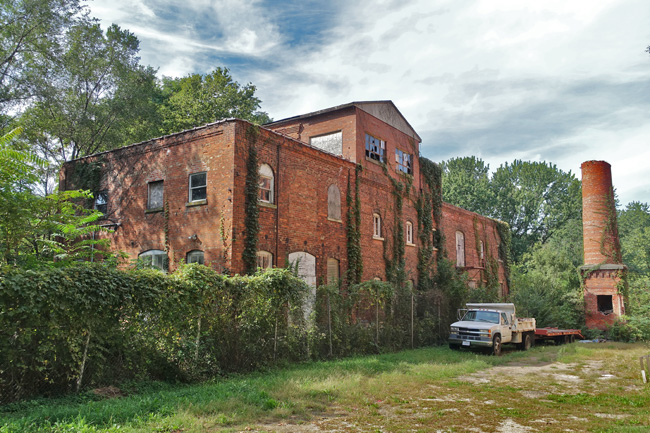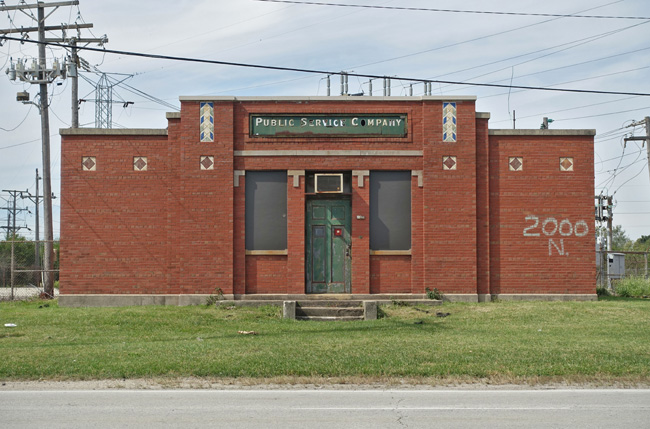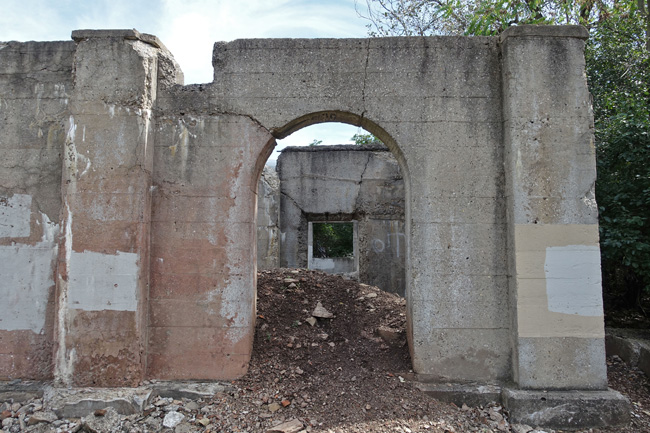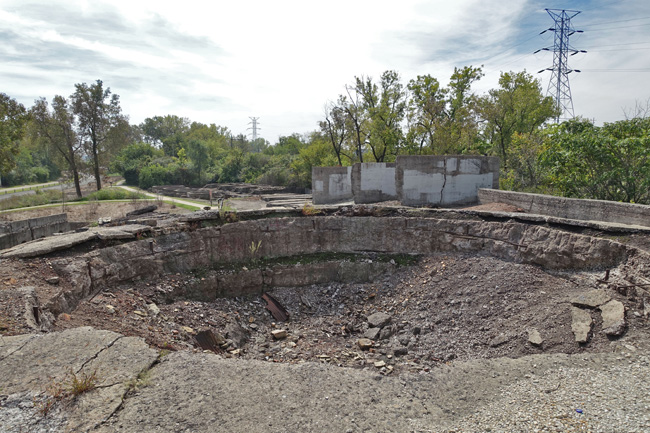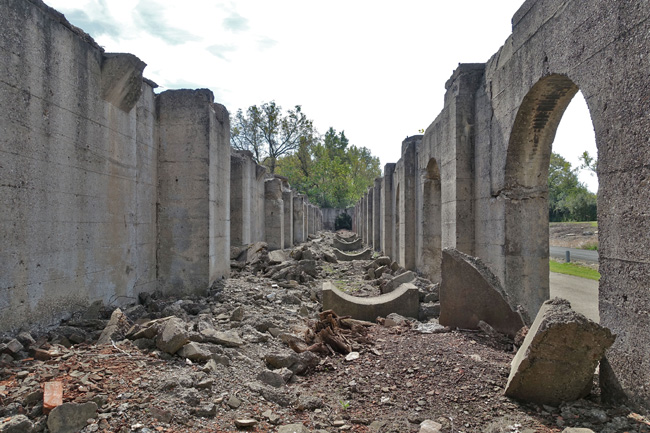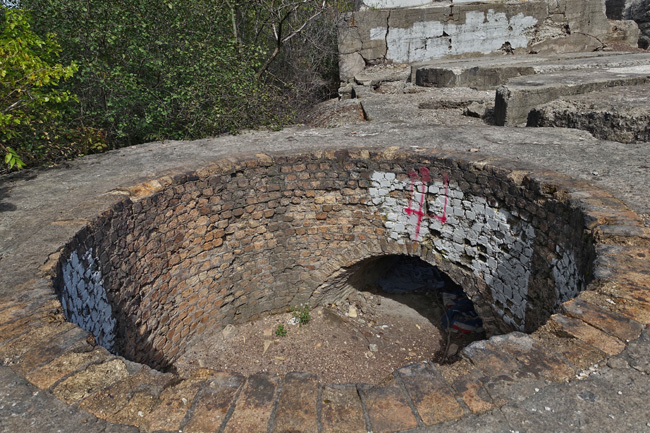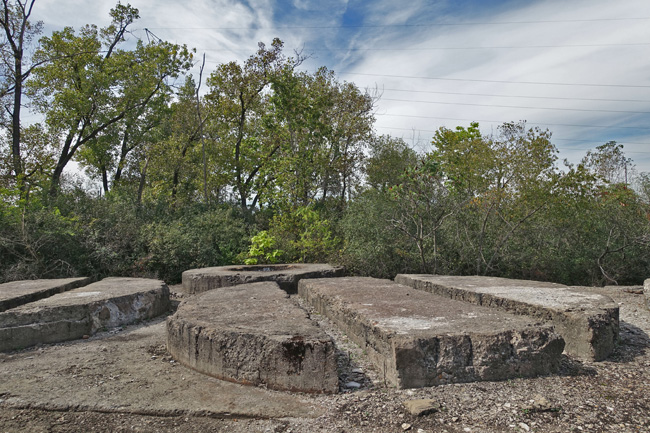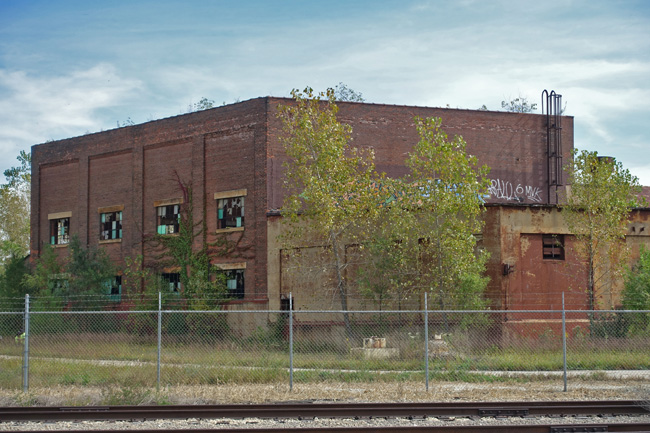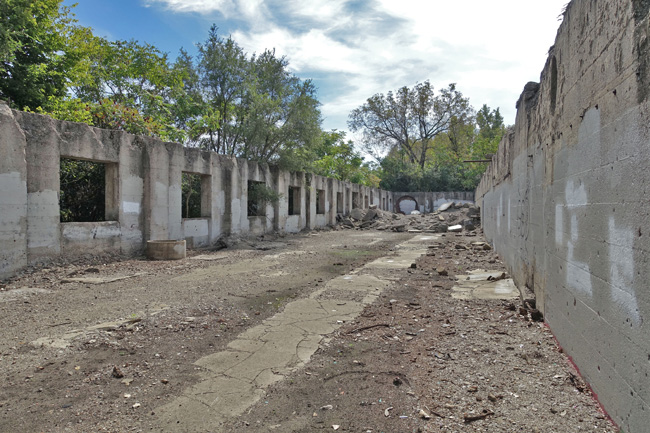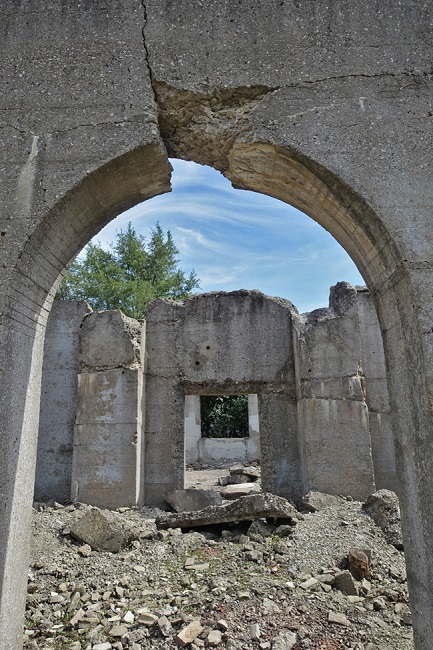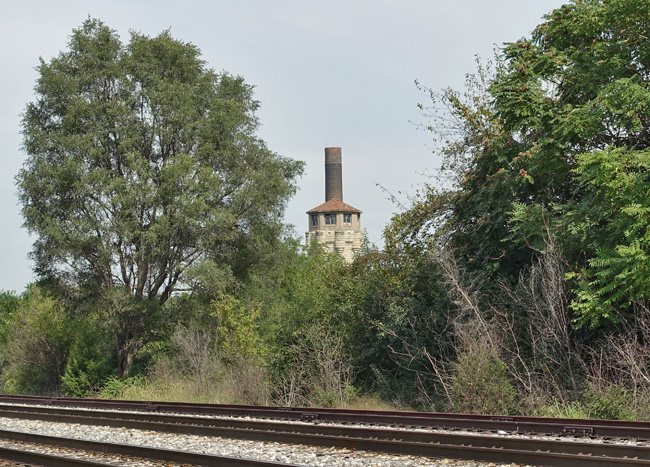After a stroll through the legendary ruins of Joliet Iron Works, I headed to the massive walled-off prison compound that lies just north of the abandoned steel mill.
Surrounded by 25-foot-high limestone walls topped with razor wire, Joliet Correctional Center covers 20 acres of land. The once self-sustaining compound consists of 24 buildings, including guard towers, cell blocks, administration buildings, light industrial facilities, a hospital, laundry, cafeteria, chapel and gymnasium. After years of neglect and vandalism, many of the structures are severly deteriorated.
Thick blankets of ivy cover the walls and fences. The grounds are overgrown with weeds that have pushed up through the cracked pavement.
The prison compound itself is not open to the public, but the parking lot has been transformed into the Old Joliet Prison Park. Visitors can enjoy a view of the castle-like main structure and read about the prison's history on a handful of informational signs.
Fortunately I was able to convince a friend of a friend who worked for the City of Joliet to grant me limited access to the administration building.
I was in awe from the moment I stepped inside. With elegant arched doorways and ornate wrought iron staircases, it looked nothing like how I imagined the interior of an old prison.
Some of the rooms even had marble fireplaces.
It was strange to see such beauty juxtaposed with the stark iron bars that separated it from the inmate areas.
Joliet Correctional Center opened in 1858, originally built to replace Illinois State Prison in Alton. Inmates were brought in from Alton to build the new prison, using limestone that was quarried on site.
By the late 1800s, the prison population had grown to a record-breaking high of 1239. In addition to overcrowding and concerns over the compound's aging infrastructure, exhaust from the nearby Joliet Steel mill was becoming a problem. Smoke often rolled in and covered the prison grounds in a thick haze, causing health problems for inmates and prison staff. One warden even resigned and moved away due to health concerns.
In 1910, the prison commissioners decided the facility needed to be replaced. Stateville Penitentiary opened in 1925, intended to replace it, but Joliet Prison remained open.
The facility has held quite a few notable inmates, including prisoners of war during the Civil War. The infamous murderers Nathan Leopold and Richard Loeb were incarcerated there. Serial killer John Wayne Gacy also spent time in Joliet Prison before being sent to Stateville Correctional Center.
Joliet Correctional Center has been featured in several movies, including The Blues Brothers and Let's Go to Prison. Since its abandonment, it served as the setting for Season One of the T.V. show Prison Break and an episode of Bones.
The prison was also mentioned in songs, including "Percy's Song" by Bob Dylan, "Joliet Bound" by Memphis Minnie, and "Lincoln Park Pirates" by Steve Goodman.
Joliet Correctional Center closed in 2002 due to budget cuts and the aging of its buildings. Most of the inmates and employees were transferred to Stateville Correctional Center.
Redevelopment plans for the site are still in the works. The Joliet Area Historical Museum wishes to preserve the prison and open it for tours, though developers have submitted other plans that would require demolition of many of the historic structures.
I only got to see a small portion of the massive facility during my visit, but I hope to return one day if/when the grounds have been opened to the public.
Grateful for the opportunity to explore such a unique site, I said goodbye to Joliet and continued eastward on my Epic Rust Belt Road Trip.
Next stop: an abandoned power plant.
If you enjoyed this article, please share it on Facebook. I would be forever grateful! To receive an email announcement when I post my next article, please subscribe to Places That Were.
By the way, I have way more photos of Joliet Correctional Center than I was able to include here. I'll be sharing them on social media, so please follow the links below if you'd like to see more of this incredible abandoned prison.
Facebook: http://www.facebook.com/placesthatwere
Instagram: http://instagram.com/theplacesthatwere
Twitter: https://twitter.com/placesthatwere/
Tumblr: http://placesthatwere.tumblr.com/
Google+: https://plus.google.com/u/0/+JimSullivanPlacesThatWere/posts
EyeEm: https://www.eyeem.com/u/placesthatwere
Youtube: https://www.youtube.com/jimplicit
500px: https://500px.com/placesthatwere
Thank you!

